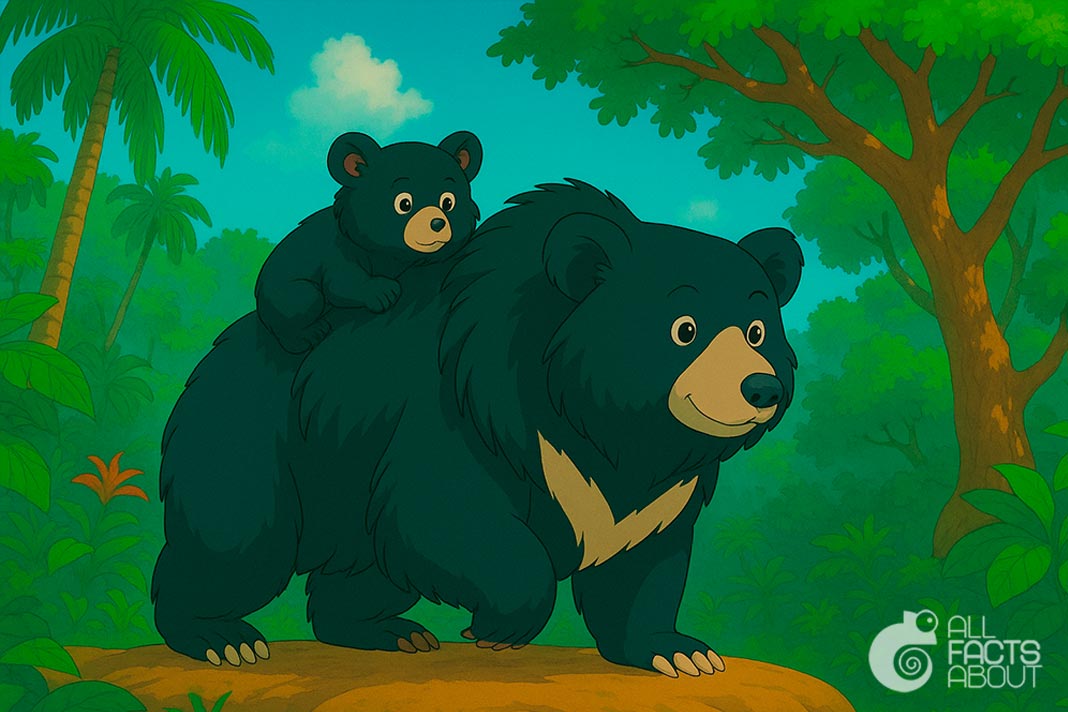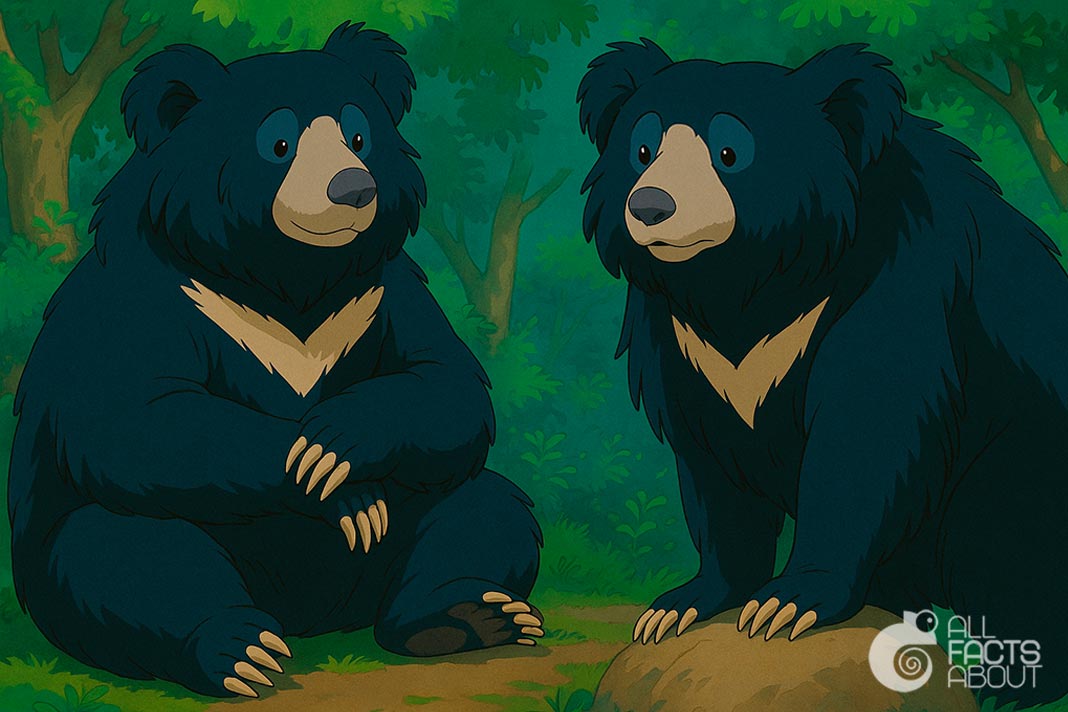Funny-looking and a bit clumsy at first glance, sloth bears are unlike any other members of the bear family. Their odd appearance—with long lips, shaggy fur, and impressive claws—hides a surprisingly well-adapted creature perfectly suited for life in the wild. Let’s explore some fascinating facts about sloth bears, one of the most unique and least studied bear species on the planet.
1. Sloth bears get their name not because they’re lazy, but because early explorers thought their long claws and shaggy fur made them look like sloths—despite having no relation at all.
2. In many Slavic languages, the name for this species of bear is translated as “lip bear” (ведмідь-губач), which directly reflects the animal’s most distinctive physical trait—its long, protruding, and highly mobile lips.
3. Unlike most bears, sloth bears primarily eat insects, especially termites and ants. They use their long, flexible lips and missing upper front teeth to “vacuum” bugs out of nests with loud snorting sounds.
4. A sloth bear’s shaggy fur and lack of undercoat help it stay cool in the hot climates of India and Sri Lanka—its natural habitat.
5. Sloth bear mothers are one of the few bear species that carry their cubs on their backs while walking. This unique behavior can last for several months after birth, offering the young both protection and a convenient way to travel as they learn to survive.

Sloth bear mother carrying her cubs on her back.
7. Sloth bears have a highly developed sense of smell but relatively poor eyesight and hearing, relying mostly on scent to locate food and detect danger.
8. Unlike other bears, sloth bears often feed at night (they are mostly nocturnal), which helps them avoid the heat of the day and competition with other animals.
9. Their long claws, which can reach up to 7 cm (almost 3 inches), are not only great for digging into termite mounds but also make them surprisingly agile climbers.
10. Unlike many bears, sloth bears don’t always hibernate, especially in warmer climates where food remains available year-round. However, during the hottest months, they may become less active to conserve energy and avoid the heat.




